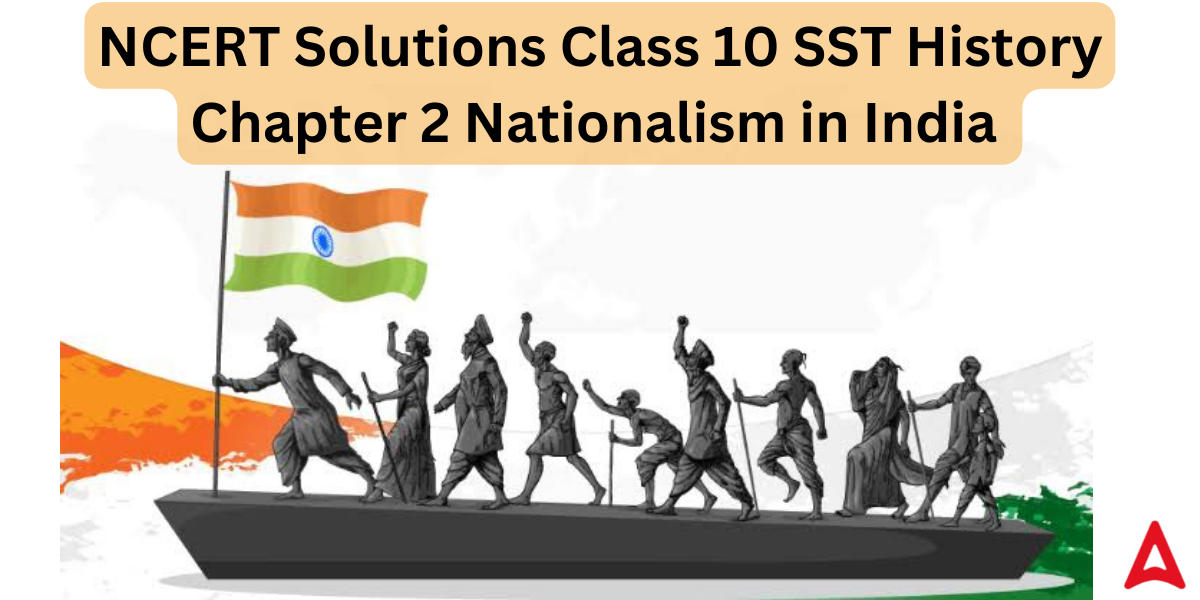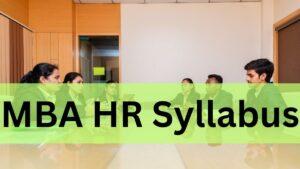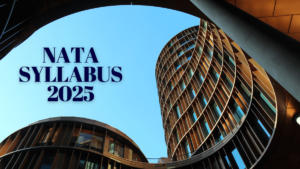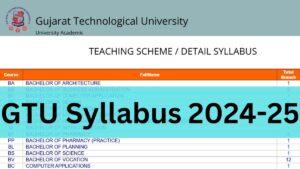Table of Contents
Class 10 History Chapter 2 NCERT Solutions
NCERT Solutions Class 10 SST History Chapter 2 Nationalism in India notes are given in this article. NCERT Solutions Class 10 is the best resource for obtaining a good score in the class 10 board Examination. Here are Adda247 Expert faculty team prepared NCERT Solutions Class 10 SST History Chapter 2 Nationalism in India exercises of that chapter for a better grasp of the topics. These NCERT Solutions answer all questions in an easy and simple manner. These solutions will help you understand the concepts covered in the chapter completely. By writing these answers in the exam students will undoubtedly be able to achieve high scores. Keep learning with Adda247.
Read: NCERT Solutions for Class 10 SST History Chapter Chapter 3 The Making of a Global World
History Class 10 Chapter 2 Question Answer PDF Download
NCERT Solutions Class 10 SST History Chapter 2 Nationalism in India pdf is given in pdf format so students can easily download it for future use. Click here to download NCERT Solutions Class 10 SST History Chapter 2 Nationalism in India
Class 10 SST History Chapter 2 Nationalism in India Video Solution
Class 10 SST History Chapter 2 Nationalism in India Summary
Class 10 SST History Chapter 2 Nationalism in India helps students in recognising the key elements and important events in Indian nationalism. The movement included members of various social groups. This war sparked the struggle for India’s independence. Due to the rise of the Satyagraha and the Non-Cooperation Movement, it sparked nationalism in India. You can improve your understanding of Chapter 2 of Class 10 History by practicing through the NCERT Solutions. Let’s examine the subjects covered in Class 10 SST History Chapter 2 Nationalism in India
- The First World War, Khilafat and Non-Cooperation
- The Idea of Satyagraha
- The Rowlatt Act
- Why Non-cooperation?
- Differing Strands within the Movement
- The Movement in the Towns
- Rebellion in the Countryside
- Swaraj in the Plantations
- Towards Civil Disobedience
- The Salt March and the Civil Disobedience Movement
- How Participants Saw the Movement
- The Limits of Civil Disobedience
- The Sense of Collective Belonging
History Class 10 Chapter 2 Question Answer
1. Explain
a. Why the growth of nationalism in the colonies is linked to an anti-colonial movement?
Answer: The growth of nationalism in the colonies is linked to an anti-colonial movement because:
- As a result of their battle against colonialism, people began to realize their unity.
- The rise of nationalist beliefs was a result of people from all walks of life uniting over their experiences of oppression and exploitation.
- People from various groups came to identify with the feeling of oppression and exploitation, which sparked the development of nationalist ideals.
b. How the First World War helped in the growth of the National Movement in India?
Answer: The First World War helped in the growth of the National Movement in India for the following reasons:
- The British army forcefully enlisted individuals from rural India during World War One.
Customs fees were increased and income taxes were enforced to pay for the cost of defense. - In many parts of India, crops failed in 1918–19 and 1920–21, causing severe food shortages.
- Due to famines and epidemics, between 12 and 13 million people died.
All of this resulted in a nationwide national outrage and hatred toward British colonial rule, which sparked a new and more strong direction for India’s national movement.
c. Why were Indians outraged by the Rowlatt Act?
Answer: Indians were outraged by the Rowlatt Act due to the following reasons:
- The Rowlatt Act allows the detainment of suspects without charges and the trial of some political crimes without juries.
- In spite of the clear majority opposition of the Indian members, the government managed to pass the Rowlatt Act in the Imperial Legislative Council.
- It granted the government absolute authority to suppress political activity and permitted the two-year detention of political prisoners without charge or trial.
d. Why Gandhiji decided to withdraw the Non-Cooperation Movement?
Answer: Gandhiji decided to withdraw from the Non-cooperation Movement due to many incidents, specifically the incident that took place in 1922, at Chauri-Chaura in Gorakhpur, where a peaceful protest descended into a bloody brawl, which resulted in the deaths of over 20 police officers. He believed that the movement was becoming violent in many areas and that satyagrahis needed to undergo proper training before they were prepared for large-scale struggles.
2. What is meant by the idea of satyagraha?
Answer: The Sanskrit words’satya’, which means truth, and ‘agraha,’ which means adhering steadfastly to, combine to form the word satyagraha. The concept of satyagraha emphasized the importance of seeking out the truth and the strength of the truth. It affirms the idea that using physical force to subdue the oppressor is unnecessary if the cause is just and the fight is for justice. It implied that if the cause was just and the fight was against injustice, fighting the oppressor physically wasn’t essential. In this, individuals, even the oppressors, must be persuaded to see the truth rather than being forced to accept truth via the use of violence. This must be done without seeking retribution or being aggressive..A Satyagraha could use nonviolent methods to appeal to the oppressor’s conscience through the strength of truth, which was determined to win.
3. Write a newspaper report on
a) The Jallianwala Bagh massacre
Answer: On 13 April 1919, one of the most horrifying incidents in History took place at Jallianwala Bagh, Amritsar. On this day a general meeting was announced to protest against Rowlatt Act. In the Jallianwala Bagh, thousands of people assembled. General Dyer suddenly marched there with armored soldiers. They obstructed the Bagh’s exits and started shooting at the defenseless locals. On this day, hundreds of innocent people—including women and children—were killed. Dyer wanted to terrorize the Satyagrahis and “create a moral effect” by doing this. Numerous large-scale strikes, altercations with the police, and attacks on government buildings were caused by this mass murder of innocent people in India.
b) The Simon Commission
Answer: The drawbacks of the Government of India Act of 1919 were revealed by the Indian members of the Central Legislative Assembly.Simon commission was established by the British government to review the 1919 Government of India Act. The commission’s goal was to examine how the act operated and offer suggestions for more administrative system reforms. The Simon Commission was greeted with the sign “Go back, Simon” when it arrived in India in 1928. because there was not a single Indian member of the commission. parties took part in the protests, including the Muslim League and the Congress.
4. Compare the images of Bharat Mata in this chapter with the image of Germania in Chapter 1.
Answer:Comparison of the Bharat Mata and the German r images as follows
- In contrast to the picture of Bharat Mata, which symbolises the Indian nation, the figure of Germania represents the German country.
- Bharat Mata is portrayed by Abanindranath Tagore on the other hand. Philip Veit painted Germania.
- Bharat Mata is represented in piece of art holding Trishul while standing next to an elephant and a lion, both of which are representations of strength and authority. As the German oak is a symbol of valour, Germania is adorned with an oak leaf crown.
5. List all the different social groups which joined the Non-Cooperation Movement of 1921. Then choose any three and write about their hopes and struggles to show why they joined the movement.
Answer: The urban middle class, which included lawyers, teachers, and headmasters, as well as students, peasants, tribal members, and labourers, were among the different social groups that joined the Non-Cooperation Movement of 1921
1) Tens of thousands of students abandoned government-run schools and colleges, along with administrators, professors, and attorneys who stopped practising law. With the exception of Madras, most provinces boycotted the Council elections.
2) In the pursuit of self-emancipation, peasants, indigenous people, and workers joined the movement. Peasants believed that the tyrannical landlords and hefty taxes levied by the colonial authority would be removed.
3) Plantation workers joined the protest in an effort to secure their right to own land in their own villages and the ability to move about the plantations freely.
6. Discuss the Salt March to make clear why it was an effective symbol of resistance against colonialism.
Answer: Mahatma Gandhi recognized salt as a potent symbol that could unite the country, which made the Salt March a potent emblem of opposition to colonialism. One of the basic ingredients in food that both the rich and the poor ate was salt. The demand to eliminate the salt tax was the most compelling of the eleven demands made to Viceroy Irwin. The most repressive aspect of British rule, as exposed by Mahatma Gandhi, was the tariff on salt and the government’s monopoly over its manufacture. With the support of 78 of his dependable volunteers, Mahatma Gandhi began his well-known salt march. From Gandhiji’s ashram at Sabarmati to the Gujarati seaside town of Dandi, the march covered a distance of more than 240 kilometers. For 24 days, the volunteers walked around 10 miles per day.
Throughout the march, Gandhiji interacted with a lot of ordinary people and taught them the true meaning of swaraj and non-violence.
Thousands of Indians protested in front of the government salt factory while breaking the salt prohibition in various parts of the nation. Gandhiji gave the entire nation an example of how to fight an oppressor without resorting to violence by doing this.
Additionally, there was a boycott of international clothing. The “chaukidari levies” and revenue were not paid by the peasants. One by one, the colonial authorities began to detain the Congress leaders.
Gandhiji and Irwin signed the Gandhi-Irwin Pact on March 5, 1931, as a result of the agitation. Gandhiji decided to attend a Round Table Conference in London as a result of this Pact, and the government promised to free the political prisoners.
7. Imagine you are a woman participating in the Civil Disobedience Movement. Explain what the experience meant to your life.
Answer: Answer the question in your own words.
8. Why did political leaders differ sharply over the question of separate electorates?
Answer: Political leaders severely differed on the issue of separate electorates due to differences in perspective. Such as
- To protect the political interests of Muslims, Muslim leaders Muhammad Iqbal and Mr. Jinnah called for separate electorates. They believed that since Hindus made up the majority of the population, Muslims would have little chance of obtaining seats in a joint election.
- Dalit communities believe that only political empowerment might end their socio-economic backwardness.In addition, Dr. B.R. Ambedkar requested separate electorates because he worried that in joint electorates, upper electorates or upper caste Hindus would dominate the elections. whereas Gandhiji thought that having separate electorates would further obstruct their integration into society. However, Ambedkar later agreed to take Gandhiji’s place in the Poona Pact of September 1932.
Class 10 History Chapter 2 Questions and Answers
Q.How do I acquire the NCERT Solutions for Class 10 SST Economics Chapter 2 Nationalism in India in an online PDF format?
Ans. you can download the NCERT Solutions for Class 10 SST Chapter 2 Nationalism in India PDF from the link provided in the article.
Q.How can I use Adda247’s NCERT Solutions for Class 10 SST History Chapter 2 Nationalism in India benefit you?
Ans. The following are some benefits of using Adda247’s NCERT Solutions for Class 10 SST History Chapter 2 Nationalism in India:
Students are given both the NCERT solution and a video explanation.
A PDF is also provided, which can be downloaded and saved for future use


 MBA HR Syllabus 2025 Out, Check MBA HR S...
MBA HR Syllabus 2025 Out, Check MBA HR S...
 NATA Syllabus 2025, Check Subject Wise D...
NATA Syllabus 2025, Check Subject Wise D...
 GTU Syllabus 2024-25 Out, Download Lates...
GTU Syllabus 2024-25 Out, Download Lates...































